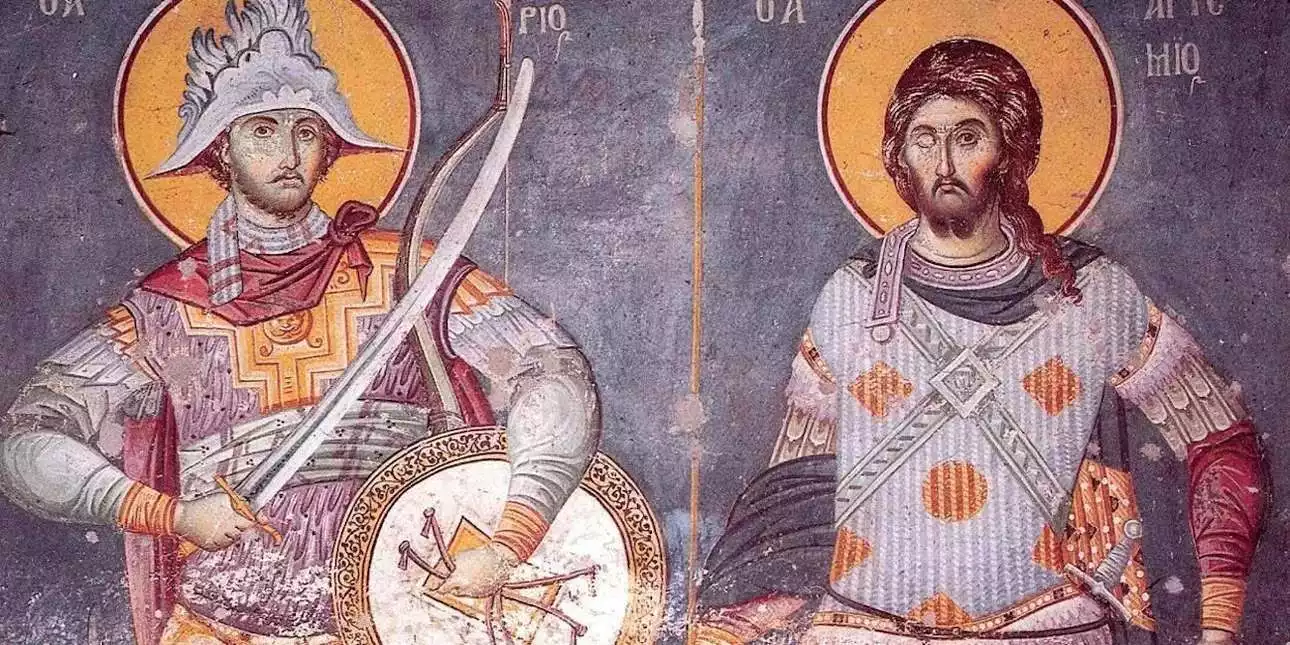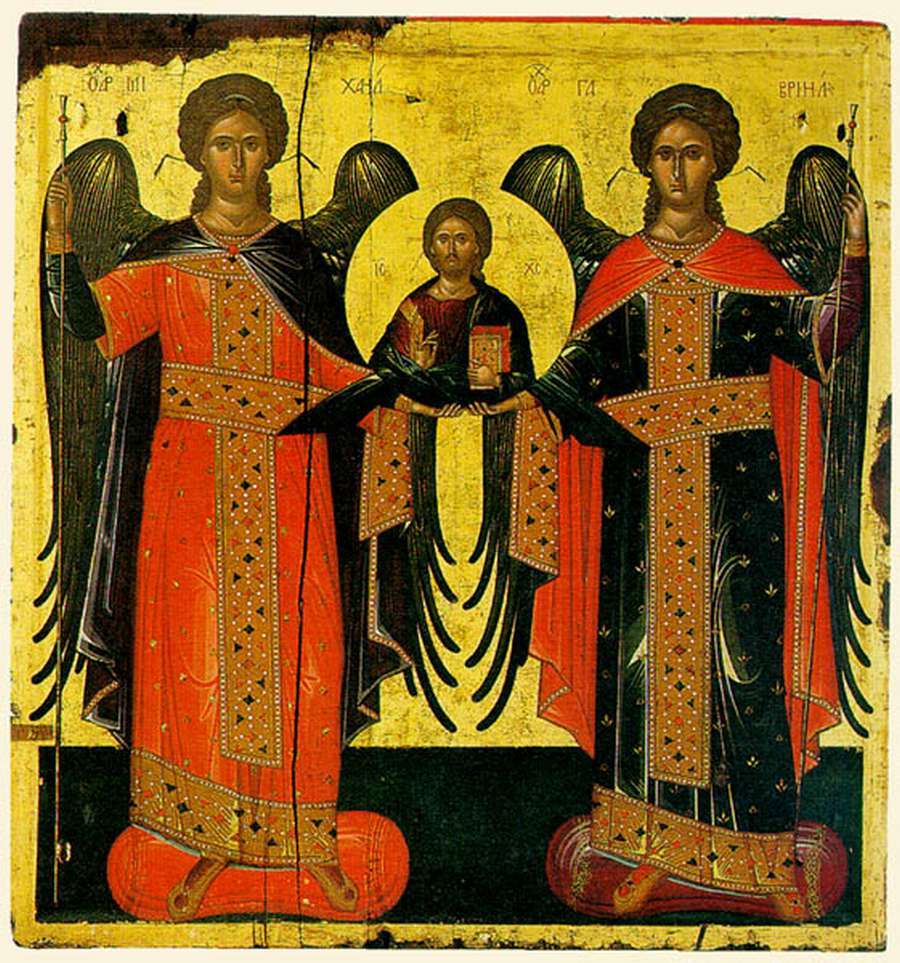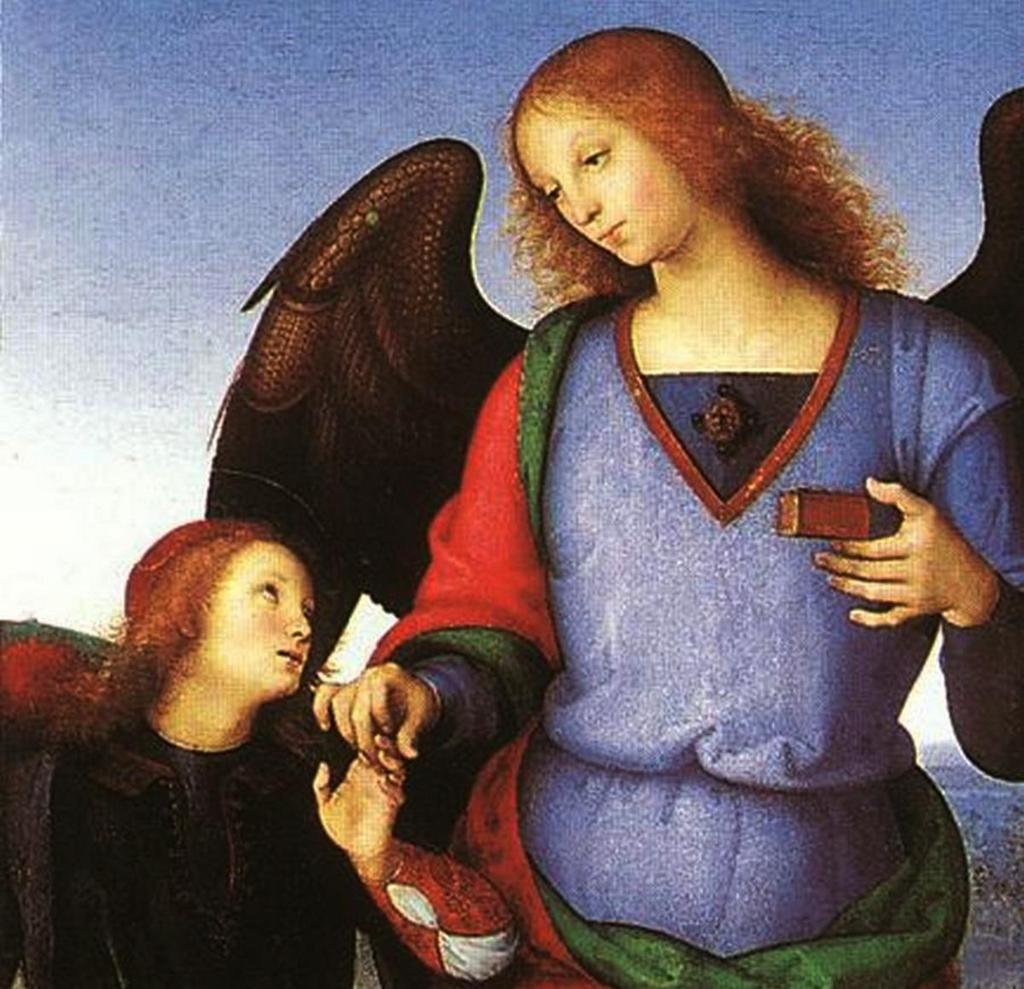
Iconography, the visual representation and interpretation of subjects in the arts, particularly in religious contexts, plays a crucial role in the cultural and spiritual heritage of both Western and Eastern Christian traditions. This article delves into the distinctive schools of Macedonia and Crete, highlighting their unique contributions to the realm of iconography.
Etymological and Typological Analysis
The term ‘iconography’ originates from the Greek words ‘eikon’, meaning ‘image’, and ‘graphia’, indicating ‘writing’. In a religious sense, it refers to the creation and veneration of sacred images or icons, a practice deeply rooted in Christian tradition. The typology of iconography in Christian art is multifaceted, encompassing various themes from Biblical narratives to representations of saints and martyrs.
The Macedonian School of Iconography
In the intricate tapestry of Byzantine art, the Macedonian School of iconography emerges as a pivotal and creative force, rivaled only by its Cretan counterpart in the pantheon of Late Byzantine artistic currents. Originating within the cultural heart of Constantinople, this artistic movement found its true flourishing in Macedonia, primarily between the 11th and 13th centuries, with Thessaloniki serving as its nucleus, before eventually extending its influence to Serbia. Characterized by a pronounced realism and a spirit of freedom, the Macedonian School’s most distinguished proponent was Manuil Panselinos.
As we delve into the historical journey of this school, it is intriguing to consider the reasons for its earlier emergence compared to the Cretan School. Historians are divided over the precise dates, but it is generally agreed that its foundational and golden era spanned from the 11th to the late 13th century, reaching its zenith in the 14th century. Its proximity to Constantinople is cited as a crucial factor in its rapid development over the Cretan School. However, by the 15th century, it began to wane, eventually being absorbed by the Cretan School despite its initial adoption by the Byzantine elite and clergy as the primary artistic mode for church decoration, notably in mosaics and frescoes. This absorption was driven by two main factors: initially, the school’s realism and representational freedom sparked religious disputes among Christians; subsequently, societal upheavals, political instability, and external threats to Byzantium led to its decline. Nevertheless, the Macedonian School’s legacy persisted in the Balkans, especially among the Serbs and Bulgarians, due to their geographical and cultural closeness to Macedonia.
The development centers of this school notably included the majestic Protaton Church at Mount Athos and the city of Kastoria, alongside Thessaloniki. Later, Serbia and Bulgaria emerged as significant centers of this artistic movement.
The Macedonian School’s hallmark was its return to the Hellenistic and archaic traditions of fresco painting. This renaissance saw a renewed emphasis on movement and naturalism, particularly evident in the dynamic depictions of military saints, who were portrayed as ready for battle, their garments flowing in a naturalistic manner that integrated them seamlessly into the surrounding environment. The color palette became more subdued, with naturalistic tones lending a lifelike quality to the figures. Multifaceted compositions and a focus on the psychological state of the depicted figures, often reflecting a heroic but spectral presence, underscored the intense desire for freedom during the gradual Ottoman subjugation of Macedonia.
Among the luminaries of the Macedonian School, Manuil Panselinos stands paramount, though other significant iconographers like Georgios Kalliergis, Michael, and Eutychios Astrapas also contributed to its rich legacy.
But, one might ponder, how did this artistic current, so deeply rooted in the spiritual and cultural life of Byzantium, navigate the tumultuous waters of historical change? The Macedonian School, with its profound sense of realism and freedom, not only shaped the visual narrative of its time but also left an indelible mark on the subsequent generations, weaving a story of artistic resilience and adaptability amidst the shifting sands of history.

The Cretan School of Iconography
In the rich tapestry of 15th-century art, the Cretan School of Iconography stands out as a beacon of innovation and cultural synthesis. Situated at the crossroads of East and West, Crete, then under Venetian dominion, became the cradle for an artistic movement that seamlessly wove together Byzantine and Western European traditions. This fusion reflected the complex cultural and political milieu of the era, marking a significant evolution in the realm of religious art.
The Cretan School is renowned for its technical prowess and aesthetic beauty, epitomizing a sophisticated elegance alongside a vibrant use of color. This period of iconography brought forth a revolution in the portrayal of sacred figures and narratives, characterized by an enhanced realism and expressive emotional depth. Such attributes marked a distinct departure from the Byzantine penchant for abstraction and solemnity.
Central to the school’s ethos was a novel depiction of religious iconography, marrying the Byzantine focus on spiritual essence with the Renaissance’s celebration of humanism and naturalism. This synthesis birthed icons that were as lifelike as they were spiritually resonant, imbuing them with a dual appeal that was both visual and devotional.
The Cretan artists’ mastery is perhaps best exemplified in their portrayal of faces. Saints and biblical personas were rendered with an unprecedented level of detail and expressiveness, endowed with a humanizing gentleness that brought them closer to the realm of the viewer. This was further enhanced by the adept use of chiaroscuro, a technique borrowed from the Renaissance, which introduced a new dimensionality to the figures, carving them out of the flatness with light and shadow to achieve a startling realism.
Moreover, the school distinguished itself in the depiction of intricate biblical scenes, where every garment, architectural element, and landscape backdrop was articulated with a clarity and precision that echoed the meticulousness of the Italian Renaissance. This attention to detail not only showcased the technical virtuosity of the Cretan artists but also their ability to create a cohesive and immersive narrative space within their icons.
Despite the waning of Venetian influence in Crete, the legacy of the Cretan School of Iconography endured, casting a long shadow over Orthodox Christian art for centuries to come. Its impact bridged the divide between Eastern and Western artistic traditions, creating a lasting testament to the power of cultural exchange and the enduring appeal of religious art that speaks to the human experience with grace, beauty, and profundity.
Comparative Analysis of Macedonian and Cretan Schools
The Macedonian and Cretan schools of iconography, each with their distinctive styles and influences, represent two significant pillars in the history of Christian art. A comparative analysis reveals both contrasts and connections between these two schools, underscoring their respective contributions to the evolution of iconography.
The Macedonian School, with its roots in the Byzantine tradition, is noted for its spiritual depth and solemnity. The icons from this school often feature a more abstract representation, focusing on the theological and symbolic aspects of Christian narratives. In contrast, the Cretan School, influenced by the Renaissance and its Venetian connections, leaned towards a more realistic and humanistic portrayal of religious themes, bringing a sense of immediacy and emotional connection to the viewer.
Despite these differences, both schools share a common goal: to convey religious messages and foster devotion through art. The Macedonian School’s emphasis on the divine and the Cretan School’s focus on the human aspect of religious figures together enrich the iconographic tradition, offering a comprehensive view of Christian art that spans both the celestial and the earthly.

Slavonic Iconography
Emerging after the Christianization of the Slavs in the 9th and 10th centuries, Slavonic iconography bears the indelible imprint of Byzantine traditions, yet blossoms with the unique sensibilities of the Slavic spirit. These sacred images intertwine universal Christian stories with the living history of the people, speaking to the faithful through vivid color, imaginative detail, and an intimate portrayal of beloved local saints.
Unlike the formal austerity of the Greek icons, Slavonic icons dazzle with a passion for storytelling, weaving elaborate visual narratives that illuminate and edify. Biblical tales come alive under the hand of the Slavonic painter, drawing the viewer into dramatic moments of faith and tribulation. Figures are rendered with an affectionate realism, set against countrysides, architecture, furnishings that reflect the artist’s own community. Even traditional subjects take on lively new meaning when filtered through the lens of Slavic life.
The colors themselves seem to dance across the panel, lucid and effusive. While retaining the somber splendor of the Byzantine palette, Slavonic icons revel in dainty patterns, sunshine yellows, crimson martyrdoms, and blue heavens that echo the vibrant costume and textiles of the Slavic people. These ebullient hues heighten the emotional resonances of the sacred stories, inviting the viewer into a deeper contemplation.
But perhaps the most cherished feature of the Slavonic icon is its familiarity – here the faithful encounter dear St. Paraskeva of the Balkans or holy Prince Vladimir of Kiev gazing back at them with the affection of a hometown saint. These beacons of local devotion, so intimately entwined with Slavic heritage, forge an affectionate bond that helps the sacred take root in the soil of everyday life.
At once conserve of tradition and celebration of culture, Slavonic iconography represents a rare flowering of the spiritual with the aesthetic. Passed lovingly from generation to generation, the icons retain their undimmed power to stir the heart, fire the imagination and open a luminous window onto the divine.
Coptic Iconography
Arising in the wake of Slavic Christianization centuries ago, Slavonic iconography interbraids Byzantine artistic heritage and Slavic zeal. These sacred representations entwine universal Christian narratives with regional histories, conversing with the pious through vivid pigments, imaginative intricacies, and portrayals of beloved hometown saints.
Unlike Greek iconography’s severity, Slavonic icons kindle a ardour for storytelling, spinning elaborate visual tales to enlighten and inspire. Under Slavonic artists’ hands, Biblical stories spring to life, summoning viewers into pivotal moments of faith and trial. Figures take on an affectionate realism, situated amidst landscapes, architectures, furnishings that reflect their creators’ communities. Through a Slavic perspective, even conventional Christian motifs gain renewed vitality.
Pigments seem to dance across Slavonic icon panels – lucid yet effusive. While adhering to Byzantine chromatic dignity, Slavonic icons revel in vibrant costumes, gleaming gold accents, crimson martyrdoms, azure heavens that echo Slavic textile traditions. These vibrant hues amplify sacred narratives’ emotional resonances, inviting profound contemplation.
But Slavonic icons’ most treasured feature is their familiarity – here the pious encounter beloved regional saints, gazing outwards with intimate recognition. These harbingers of local devotion, inextricably interwoven with Slavic heritage, forge an affective connection between the holy and the quotidian.
At once guardians of tradition and celebrants of culture, Slavonic icons represent a rare flowering of aesthetic and spiritual. Passed lovingly through generations, their power to rouse hearts, ignite imaginations, and unveil divine mysteries remains undimmed.

Western and Renaissance Iconography
Western and Renaissance iconography profoundly transformed the evolution of Christian art, marking a remarkable departure from earlier Byzantine and Eastern traditions. This rich period from the 14th to 17th centuries witnessed an artistic reawakening that mirrored the changing tides of European society.
The Renaissance marked a ‘rebirth’ of interest in classical Greece and Rome, igniting the Western artistic imagination. This revival radically impacted religious iconography, overturning the old symbolic order with ingenious new techniques celebrating the human spirit.
Gone were the stylized figures of Byzantium. Renaissance artists championed lifelike realism and emotional resonance. With ardent curiosity, they mastered perspective, anatomy and chiaroscuro to capture the natural world on canvas. Divine figures gained unprecedented passion and physicality through the brushes of innovators like Michelangelo and da Vinci.
Renaissance iconography also bore the imprint of a world in transformation. No longer bound solely to religious narrative, art now probed the depths of human experience. Painterly backgrounds came alive with intricate landscapes, architecture and details from contemporary life. As art gained recognition in its own right, it turned a mirror onto society, reflecting back its triumphs and follies.
Even while embracing realism, Renaissance artists imbued their works with the riches of symbolism. Arcane metaphors from theology, myth and poetry supplied additional strata of meaning. Every careful detail provided commentary, invitation or warning. This mastery of layered messaging allowed Renaissance iconography to entrance both heart and mind.
In celebrating both sacred subject and artistic individual, while drawing renewed inspiration from the past, Renaissance art pioneered a humanistic vision that impelled Western culture towards modernity. Its legacy stand today as a shining monument to the wellspring of creativity that arises when disciplines converge across time, tradtion and spirit.
In conclusion, the study of the Macedonian and Cretan schools of iconography provides invaluable insights into the religious, cultural, and artistic landscapes of their respective eras. These schools, with their unique styles and influences, have significantly shaped the development of Christian iconography, leaving a lasting impact on the visual language of faith. Their enduring legacy continues to inspire and influence contemporary Christian art, demonstrating the power of visual imagery in expressing and preserving religious beliefs and traditions.
References
- “Medieval and Byzantine Art Research.” The Courtauld Institute of Art, 2023. Accessed 16 Dec 2023.
- Rice, David Talbot. “The Icons of Cyprus.” George Allen & Unwin Ltd, 1937.
- Weitzmann, Kurt. “The Icon: Holy Images, Sixth to Fourteenth Century.” George Braziller, 1978.
- “Heilbrunn Timeline of Art History: Icon Painting.” The Metropolitan Museum of Art, 2023. Accessed 16 Dec 2023.
- “Art and Religion Research Guide.” Catholic Research Resources Alliance, 2023. Accessed 16 Dec 2023.
